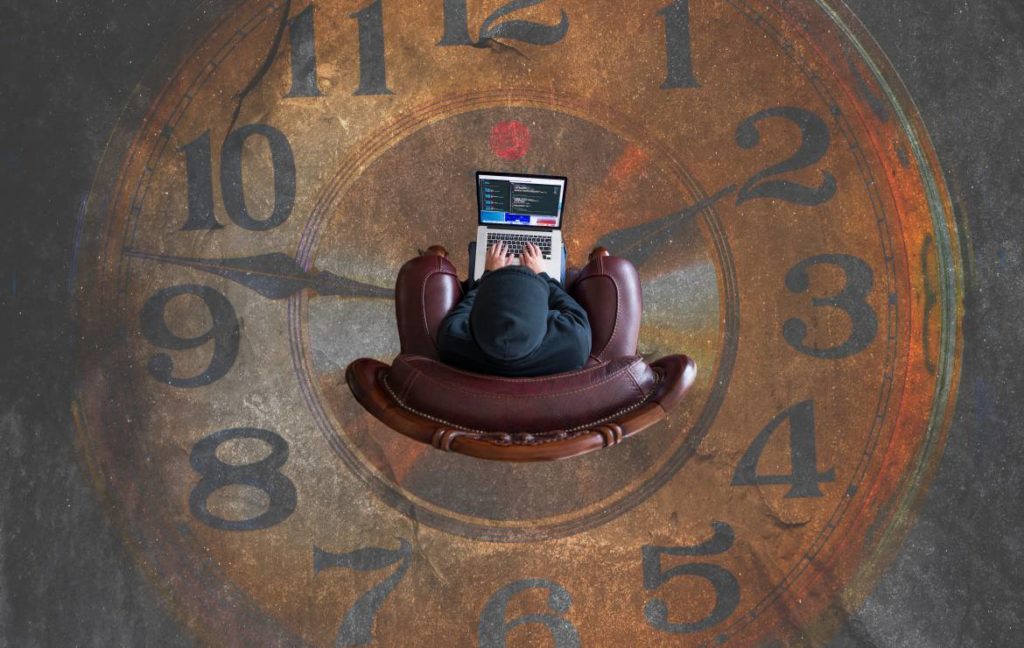
TIME MANAGEMENT
HOW TO USE YOUR TIME MORE EFFICIENT
No matter if you are studying, self-employed or working in an office – the ability to manage your own time is becoming more and more important. With a structured way of working you can not only impress in job interviews, but in the end you’ll have more free time and are less stressed. By the way, time management is not only about learning great techniques and spending even more time with them, but also about making your day-to-day work profitable for yourself. This can have a stress-relieving effect, especially if you recognize the strategies, that are working for your type of personality.
IN ORDER TO ACHIEVE THIS GOAL, TWO CONDITIONS MUST BE FULFILLED:
- the willingness to develop and improve. Sounds banal at first, because of course is that something all of us want. But it is not easy to admit that the eight hours in the office are often not used optimally. That’s because we cannot work eight hours at a time with the same energy. Recognizing and accepting this, is an important step in your individual transformation process away from traditional ideas of work towards an evaluation of work that is adapted to today’s state of knowledge. Self-reflection is an indispensable sub-process in this development!
- knowledge about oneself or one’s own type of work. This includes questioning one’s own way of working and examining one’s own working relationship with regard to the associated requirements and possibilities. On a personal level it is worthwhile to reflect on what motivates each of us and what slows us down as well as on energy highs and lows during the course of the day.
AT A GLANCE: STEPS FOR INDIVIDUAL TIME MANAGEMENT
- Know your own biorhythm – when am I most productive?
- Recognize time thieves and find strategies to eliminate as many as possible of them
- Sort tasks and set priorities
- Adaptation of the tasks to one’s own biorhythm
- Divide the working time into intervals with breaks
- End the day satisfied and unstressed
NOT EVERYONE WORKS THE SAME – DO YOU KNOW YOUR INDIVIDUAL ENERGY CURVE?
So if you have decided to put your way of working to the test, to improve it and to develop yourself, the question now is “How?”. Start with yourself and find out when you are most productive and concentrated in the course of your working day. If you are tied to certain times, start observing yourself during that time, when is it easy for you to complete your tasks and when do you have to force yourself? Also question your break times: Does the lunch break at one o’clock really suit you, or do you actually just go along for the love of your colleagues and think most of the time during the break about what else you could and want to do?
If you belong to the group of people without fixed office hours, time management for you means first of all defining and adhering to working hours. The location also plays an important role, because especially at home time thieves or possibilities often lure you to stop yourself from working. If the framework is right, it is important to capture one’s own energy highs and lows. But as self-employed you are freer at this point and you can pay more attention to yourself, because it is also possible for you to work from 2 p.m. to 10 p.m. if you feel more productive in the evening.
If you have observed yourself for two or three days and marked your highs and lows, you can set up a schedule for your working time and schedule breaks and possible interruptions (conversations with colleagues, predictable phone calls, buffer time for unforeseen tasks) and put them into the less productive phases of your working day.
“TIME MANAGEMENT?! I DON’T HAVE TIME FOR THIS!” – TIME THIEVES IN EVERYDAY WORKING LIFE
If this sentence sounds familiar to you, it may be because you often let yourself steal your time. So before you renounce time management methods, you might want to check if you really use your time for your tasks. If after a day in the office you often have the feeling that you have come to less than you actually wanted, this may be due to your behaviour towards colleagues for example. One of the biggest time thieves is not only the private conversation, but also the help you offer your colleagues. Of course, teamwork is important and it is always good to be helpful, but it should be possible to say “no”. This doesn’t have to be unfriendly, the truth is the simplest solution. If you tell your colleagues that you have a lot on your desk at the moment and like to help them when you have a bit of freetime, that is understandable for everyone. However, if the problem is acute, you can also plan a fixed period of time to help in these situations. It is important that you return to your own tasks at a certain time. In such a situation, it is also worth considering whether there are not colleagues who are better contacts for the problem, or whether it could even fall within the scope of a certain department in your company. Delegating is the magic word here! The same applies if a little chat threatens to degenerate. Be honest and make an appointment at a time that you yourself have set as a break.
Self-employed people have this problem less often, but their biggest problem is often a lack in planning, which then leads to procrastination. Or too much is planned and then only half is finished. Well, there are time management methods to get such time thieves under control.
AN EFFECTIVE TIME MANAGEMENT BY THE SUITABLE METHODS
The nice thing about the methods presented here is that they can be applied to a wide variety of work situations and can also be combined with each other.
The first step of planning time effectively can be the evaluation of tasks according to the A-B-C method. Very important tasks are marked with A, important ones with B and less important ones with C. Tasks in category A should take up about 70% of your working time as they have the greatest benefit for you. It is not recommended to want to do more than two such tasks in one day. Check if your B-tasks can be delegated and don’t spend more than 20% of your time on them. Tasks in the third category are often the most time-consuming routine tasks (administrative tasks, paperwork, telephone calls, e-mails, etc.). Therefore, be careful not to give these tasks more than 10% of your working time.
Another dimension of time management is setting deadlines. The Eisenhower matrix can help you here as a tool. Assign your tasks to the areas important/urgent, important/not urgent, not important/urgent, not important/not urgent. This extends your first order according to the A-B-C method by the dimension of the deadline. Tasks that you find in the last category should be checked carefully and deleted completely if possible. Don’t forget to schedule important tasks that are not yet urgent, because if they are postponed too often, they are a trigger for stress at a certain point. After this sorting of your tasks you can now create a detailed to-do list, which should also be provided with concrete time targets. If you have many tasks, which are important but not urgently intended for this day, it is also worthwhile to create a master-to-do list for the whole week or a period of your choice. You can also use these lists to set a daily, weekly or monthly goal!
In a final step of your personal time management it is now about the concrete use of your working time or a more precise time management. If you have scheduled two hours for a task that has priority, it makes sense, for example, to put it into one of your high productive phases of the day. It also makes sense to use the 60-60-30 method. If you follow this method, you work two times 55 minutes focused and take 5 minutes break each time. Then take 30 minutes for a longer and more relaxing break. Another option is the Pomodoro method, in which you divide your working time into blocks of 25 minutes, after which you take a five-minute break. These phases are repeated four times and then you take a 30 minute break. Which of these methods is better for you and your daily work? You can also combine both methods in the course of an eight-hour day. The Pomodoro technique is particularly suitable for phases in which the energy level is somewhat lower.
After so much theory, now practice can follow. Just remember that ultimately you as an individual are in focus and you alone decide which methods work for you in which combination. It doesn’t help much if you only acquire great methods, it is important to consider yourself and your work as being made up of many factors and to try to use the appropriate methods for yourself. Ultimately, it is always a question of trying out and adapting, especially if you have different types of tasks to work on. By the way, if you would like support in your personality development, just get in touch with us.
Photo by Kevin Ku on Unsplash
